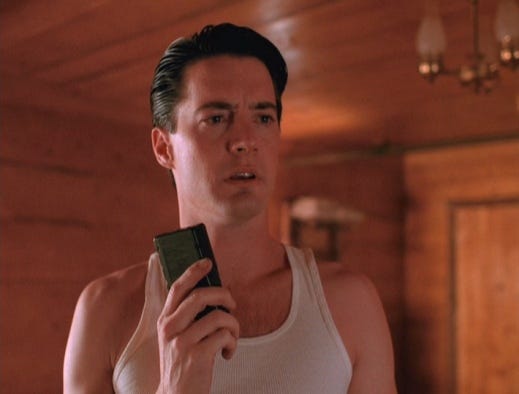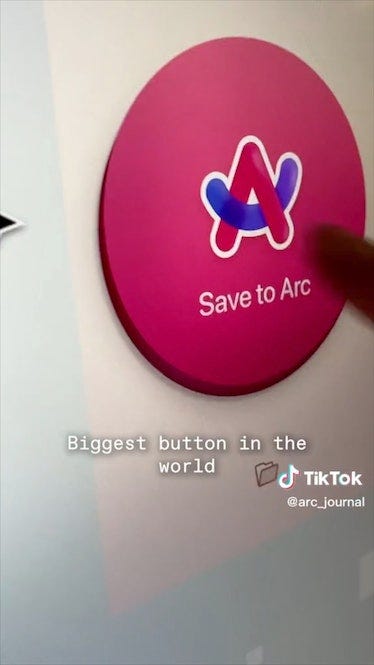idle gaze 051: we just want to touch.
Skeuomorphism and the return of joyfully tactile consumer tech.
The world of consumer tech has lately been filled with increasingly science-fictioney visions of near-future society. Often, it seems hard to tell if it all feels radically hopeful or depressingly dystopian. But beyond the bright limelight of the incoming Apple Vision Pro, the latest in AI caretaking or air-filtrating headphones, there’s a new, unlikely product that seems to evoke the giddiest of emotions. A gadget that has generated a very unique kind of joy, not so much because it offers a bold statement about the future, but because it delves into the past.
The device in question is the ‘TP-7 field recorder’, a plaything revealed back in May by a small, experimental Swedish electronics company called Teenage Engineering; a brand known for its playfully analogue and radically stripped-back music production and audio tools.
On paper, the TP-7 is a simple digital recording device designed to record everything from ambient noise, music to interviews and personal memos. But its not so much its ability to record high-quality sound that makes this thing unique, but the way it looks and feels.
While the field recorder is fully digital, its user interface features highly analogue details. Reminiscent of the thoughtfully functional, yet strikingly simple Dieter Rams designed midcentury appliances, the TP-7 provides a “rewarding man-machine experience”, inviting one’s fingers to intuitively utilize the highly tactile, physical controls.
The star of the show is its motorized, delicately engineered, brushed steel tape reel, as well as a highly sensitive hall sensor that lets you virtually grab your recording. Designed to fit perfectly in the palm of your hand, it features a side-mounted rocker that allows you to quickly scrub through your audio, and a bright red record lamp that indicates that a recording is taking place.
The TP-7 gives off very retro-futuristic vibes. This isn’t a recording device, it’s a time machine; inviting you to escape the bleak mundanity of flat touchscreens and augmented reality that have become ubiquitous today.
With a field recorder like this in your hand, the world is your oyster. You can transform into the police detective or investigative journalist you’ve always secretly wanted to be. Perhaps you’re Agent Cooper in Twin Peaks recording reports of various lengths, warning listeners about the fishy taste of coffee and wondering what really went on between Marilyn Monroe and the Kennedys. Maybe you’re Scully in X-Files, incessantly recording every detail of a mysterious alien autopsy.

With the TP-7, deep, irrational desire far outweighs any functional need. There are countless comments online along the lines of “I have absolutely no need for this, but I want it so much!”. Here’s a device you can actually touch and play with, that’s cause for celebration!
This approach to intentionally designing a modern sound recorder in a way that resembles an analogue tape reel is connected to the practice of “skeuomorphism” - the approach to making digital tools resemble their real-world counterparts. The aim of skeuomorphism is to make digital experiences familiar and relatable by mimicking traditional objects and materials.
A decade ago, skeuomorphism was all the rage, especially in digital design. Perhaps you remember the exaggerated realism of early iPhone OS versions? Virtual books displayed in the wooden newsstand of the e-reader app, the boom mic representing the voice recorder. Your contacts: a flipbook-like directory. Aged brown leather lined the Notes app, while the Game Center featured billboard-table-like green felt.
All this was retired with iOS 6 in the biggest interface overhaul in Apple’s history to date, and since about 2013, minimalism has taken the tech industry by storm. In the 2000’s, skeuomorphism sought to answer the question: “How can we help people understand how this works?”. During the last decade, the question on minimalism’s mind has been: “How can we help people to use this more easily?” The answer: eliminate all clutter. Across both software and hardware, superfluous gradients were subtracted, unnecessary textures and details smoothed out.
But in line with the inescapable oscillation of trends, there’s now a growing desire to escape from the blandness of minimalism. As Terry Nguyen pleaded in Dirt’s piece on skeuomorphia:
We’ve spent nearly a decade in a post-iOS 7 world. We crave glimpses of a sheen, a shadow. It’s time to retire the unbearable flatness of being online.
And indeed, skeuomorphism seems to be making a comeback, ready to bring back colour and texture to our digital experiences. Teenage Engineering for one, are advocates. Another modern champion of the skeuomorphist return is the Browser Company - the startup behind the Arc internet browser - who have announced their ambition to bring back quirky design details that feel rooted in real life.
As Arc’s lead product designer Nate Parrott explained to Inverse:
“It is really teasing out physicality, depth, and shadows, and working with 3D. It's about bringing the joy and the fun back, and that's something that has always driven us: this idea that there's not a lot of fun [in software design] these days.”
It’s mobile browser, for example, features a big red button that has a squishy sensation to it. It feels radically tactile to interact with, a stark contrast to the flat, monochromatic UI we’re now used to.
As technology comes closer and closer to our bodies, the operating systems of devices assimilating with our eyesight and sound, we’re once again dreaming of the disconnect that used to exist between flesh and hardware. As Jesper Kouthoofd, co-founder of Teenage Engineering predicted in a
feature:When the pendulum moves back, the next step will be physical aberration where you want to touch everything again . Objects that you can touch, not like a keypad, something you can actually interact with.
We’re once again yearning for the tactile thrill of analogue objects: the contrasting textures, satisfying clicks and the cold sensation of brushed steel between our fingers. The desire to bring back skeuomorphism is rooted in the very human desire to want to touch and feel things. As Arc’s lead product designer explained, more straightforwardly:
“We like to press things and having them go boop.”







